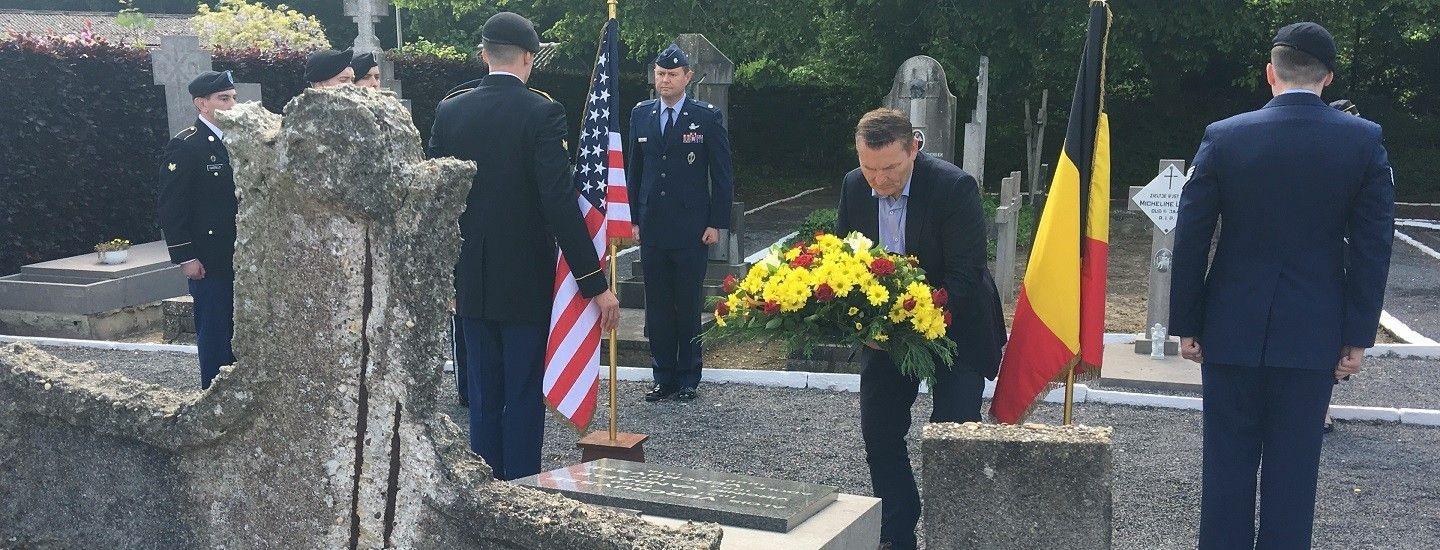FRIDAY, MAY 24
HIDDEN GRAVES, HIDDEN STORIES, Part 2
Today the path of learning about the hidden grave sites in Belgium continued. The first stop was particularly noteworthy because it was the first year that the town of Houthulst honored Adolphe Vercuysse. The brief ceremony provided insight into the life of Adolphe and his family, who fought for Belgium and are also buried at the site but in another section, at the church. An interesting part of these proceedings is the involvement of local mayors, who attend each site and are part of the service. They are truly appreciative of the Americans' involvement in the war and want to show their thanks by laying wreaths of flowers at the graves. Each observance offers such a moving experience.
Next stop on Friday's tour was at the Kemmel American Monument. For Jeff, this is a major monument because it is dedicated to the members of the 27th and 30th Infantry divisions from World War I.
The 27th was made up of New York troops, but the 30th was comprised of Southern soldiers from North Carolina, Tennessee, South Carolina and some Georgia Guardsmen. In his work with our current NC National Guard, Jeff has heard so many stories about the service of these men during the Great War. Now he and the team are standing on these sacred battlefields where so many of North Carolinians were killed fighting for freedom.
In addition to the ceremony, which centered on the monument and the men who fought in the area, local school children participated in the laying of the wreaths and sharing stories of the men. One story in particular was about a NC soldier from Hillsborough who fought and died here.
After a reception at this former private home (which looked more like a castle), the team continued its path and headed to a British Commonwealth war cemetery in Lissenthoek.
This site contained three isolated graves, along with more than 40 graves of Americans who left the U.S. to fight before America officially entered the war.
One of these soldiers was a medical worker who joined the British military to render aid, but he was born in Kenansville and lived in Wilmington. He died, in the medical hospital on the grounds next to the cemetery, of complications from a train hitting his legs. Because he died in a uniform of another country, he is not part of the official ceremonies, but he is still remembered regardless.
The last stop on this day of exploring hidden graves is in Ronse for the ceremony of Second Lieutenant Gilbert Malrait. Attended by many respectful visitors, the service included several special features: a color guard, Scottish bagpiper and a flyover of vintage warplanes.
This was truly a great way to learn about the service of so many soldiers who wore the American uniform and died during the Great War.




